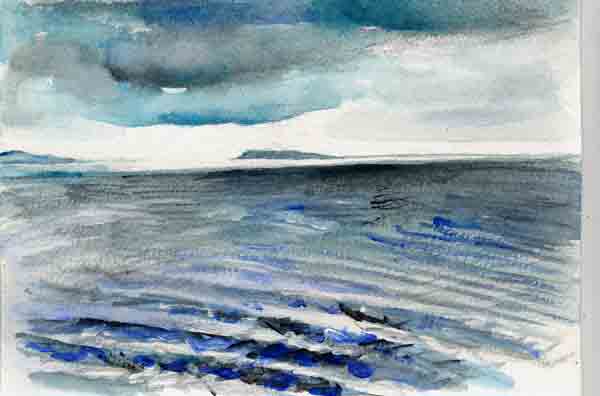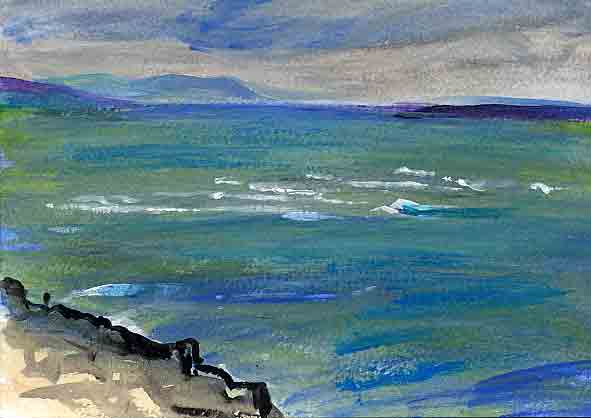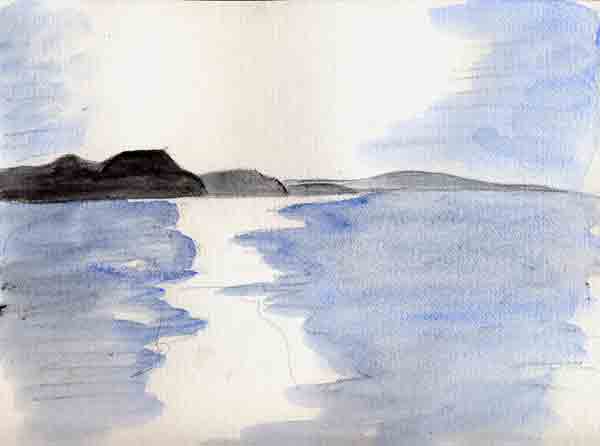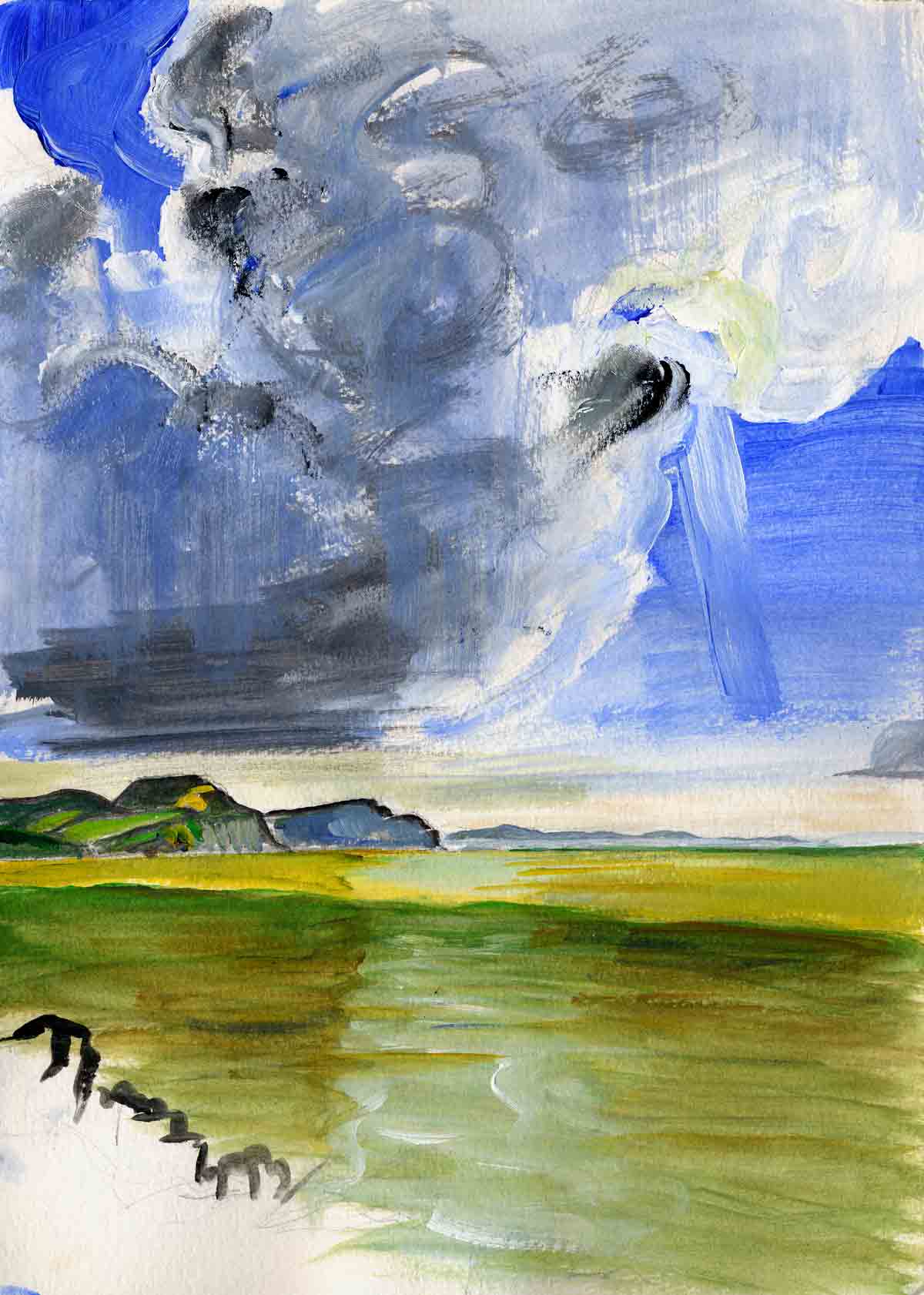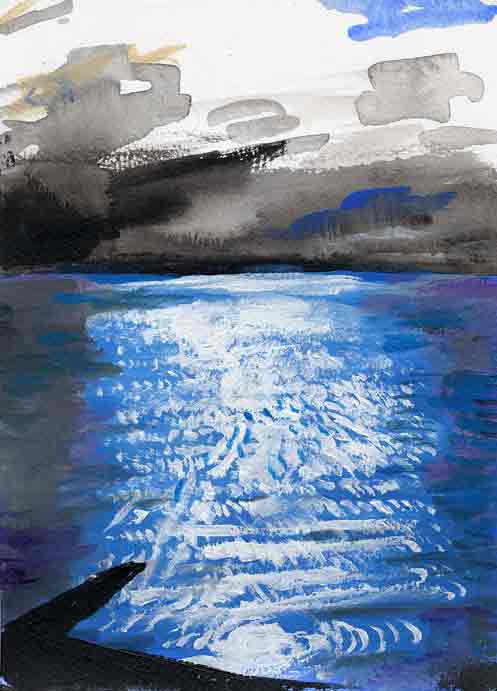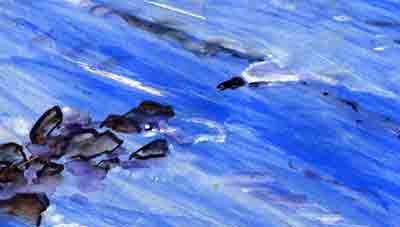The Lyme Maze Game

Sometimes on coming down to the sea one can't help thinking of it as a huge puddle that has stopped filling just in time.
The Isle of Portland can be seen some days, not others. It's twenty-five miles away, so this isn't quite like the magical one day a year when Mount Athos shows itself—and throws the shadow of the setting sun—a hundred miles across the sea to Troy. Portland is not really an island, but its low-lying neck is, from here, hidden below the horizon. What shows above the horizon is a steep bluff at that end, and a long slope to the southern tip, which is still a pretty high cliff (Portland Bill). The clearest weather doesn't seem the best for seeing Portland: it's often visible when cloud covers most of the sky but there is brightness in the distance; or on a clear day, with the sun shining in your face, it is invisible, then seems to crystallize out of the horizon as a cloud passes over it. Most of the colours of the sea come from above: under a sky that's mostly cloud there are fields of light fallen from rifts; under a mostly bright sky there are cloud-shadows, rainbruises, and windruffles of various grays. Some of the light flat curving paths must be slicks, very thin films of organic matter that suppress ripples. Nearer in, the colours of seaweed, rocks, and sand begin to show under the reflections. A day with a few streaks of sunlight, lines of sparks treading in opposite directions under the breezes. Another with myriad sparks of light moving quietly shoreward. Sometimes there is a stab of brilliant light from a hole in the cloudroof.
Wind from the west, tide well out: whitecapped rollers, like ranks of soldiers marching in, up to six of these ranks at a time; the farthest out having spray flung off their tops; the nearest in have the strong low morning sunlight on their backs, deep blue on the breaking fronts and in the shadow cast before. One noon the entire sea is covered with parallel waves only a foot or two apart. Ten minutes later (under a slightly different sky) the color all over has lightened to green-yellowish, the sea is only finely ruffled with waves of no more than inches—ripples—which are picked out with points of sun-glint—it all looks like sandpaper. On days when the breeze is driving waves in but the sun is brilliant, the surface in the near part of the light-path looks battered—battered down under the blows of light and air into crinkled facets, the surface of a collapsed jelly. The state of the tide (on a rainy day in February) when the water is just shallow enough over Broad Ledge to cause a long field of breakers:
Some summer days there are no waves, only ripples. PICTURE: seaRipplesOnly Waves are generally caused by large-scale winds far out at sea, beyond the horizon; ripples, by local breezes. Can there be a sea with only dimples?—or none? What's wrong with this picture? PICTURE: seaReflectingSky Lakes can look like mirrors; the sea, I think, never can. It's too large to be free of waves or ripples sent from somewhere. I have a half-memory of a sea like a mirror as I once crossed in a slow ship from Libya to Greece, but I think it's a mis-memory. Moods of the sky and hence of the sea:
A temporary reef of rocks pointing out into the sea during work on the new coast defences. Gazing idly at it, I noticed that it seemed to attract the waves: that is, a wave rolls past it, the part of the wave directly aiming for it speeds up and pours toward it. On second thought, not in the least paradoxical: the wave has broken on the lower parts of the reef under the water, and "breaking" of a wave consists of the upper water falling over forward.
|
